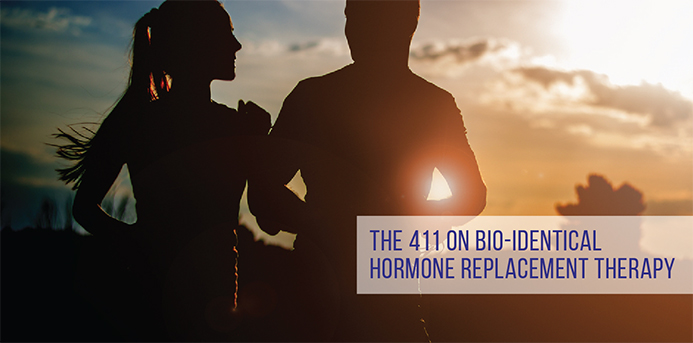Prior to 2002, giving women hormones during the peri and menopausal years was considered the standard of care. In 2001, 17.9 million women were on at least one hormone replacement therapy [HRT] drug.
In 2002, a study called the “Women’s Health Initiative” hit the headlines, stating that HRT raised the risk of cancer and didn’t lower the risk of heart disease. This incited mass hysteria. Women and doctors both reacted by having women stop their hormones, and many did so almost overnight. By 2008, only 5.9 million women remained on hormones.
For men, the story is slightly different. In 1996, there was a study published indicating that testosterone therapy increased the risk for prostate cancer and men ran in fear as well.
In recent years, many well-respected publications have indicated that these responses may have been more dangerous for both men and women than the hormones themselves. In addition, there are more and more reports that suggest that supplementation is safe. There is still some question about how long one should remain on a hormone regimen. Is it 5-7 years, or longer? There are many of us who have looked closely at the data and believe that hormone replacement is essential for good vibrant health, so why would you stop at all? In my field, we tend to choose hormones that most closely resemble those that we have in our bodies from the time we are conceived, and we refer to these as bio-identical hormones [BHRT].
Commonly Asked Questions
What exactly is BHRT?
BHRT stands for Bio-identical Hormone Replacement Therapy. This is where certain products are used to extract the basic building block that is part of every hormone, and then use this to build human hormones; namely thyroxine, tri-iodothyroxine, estradiol, progesterone, and testosterone, to name a few.
Is BHRT natural?
Trustworthy manufacturers tend to use plants to obtain this basic building block. The combination of the source of the ingredients and the fact that the hormones manufactured are exactly what is naturally found in the human body makes them natural.
What are the risks and benefits?
There are risks and benefits to all treatment options. In our consultations we take an extensive history to determine whether an individual would benefit from treatment. As we age, our hormone levels decline, causing a whole host of symptoms from fatigue, brain fog, loss of lean muscle, fat gain, decreased libido, and a general decrease in feelings of wellbeing. For women this process starts in their 20’s and men in their 30’s. During our consultation, we take quality of life issues into consideration when helping our patients decide whether BHRT is right for them. Some clear risks include the following. For a woman who still has her uterus, and is prescribed estrogen therapy, she must also take progesterone. Estrogen alone may increase the risk for endometrial cancer. Conversely, if only progesterone is prescribed without estrogen, and the woman has a history of low estrogen levels, this may increase the risk for breast cancer. Because hormone balancing is complex, I urge anyone considering BHRT to seek a physician that is well-seasoned in hormone therapy. Too often I come across individuals under the care of wellness coaches that are on a regimen that could be harmful.
How is BHRT taken?
There are multiple routes of administration including creams that are applied to the skin, pills that are swallowed, injections that are self-administered, and small tablets called “pellets” that are placed under the skin by a trained provider. There is substantial research that suggests for patients with clotting issues or high inflammation, the best route is pellet therapy.
What can I expect with hormone optimization?
Depending on the route of administration, patients may start to have an improvement in their symptoms as soon as two weeks into therapy. Skilled providers use blood tests and a patient’s symptom report to arrive at the appropriate dose. Other providers use saliva testing, however saliva has limitations in that it cannot test certain key hormones. Although results vary by individual, many of our patients experience increased energy, improved sleep, increased mental clarity and focus, increased muscle tone, and better sexual desire and performance. Complete resolution may require some blood testing and mild adjustments before the patient and provider are comfortable with the results.
BHRT can be a fantastic solution in improving quality of life, the aging process, and energy levels. If you would like to learn more, feel free to reach out to us. In the meantime, Be Well and Beautiful.
595 Elm Place, Suite 208 | Highland Park, IL
847-681-8821 myfreshskin.com
Beauty begins with Beautiful Skin, and Beautiful Skin begins with a Healthy Body.™


